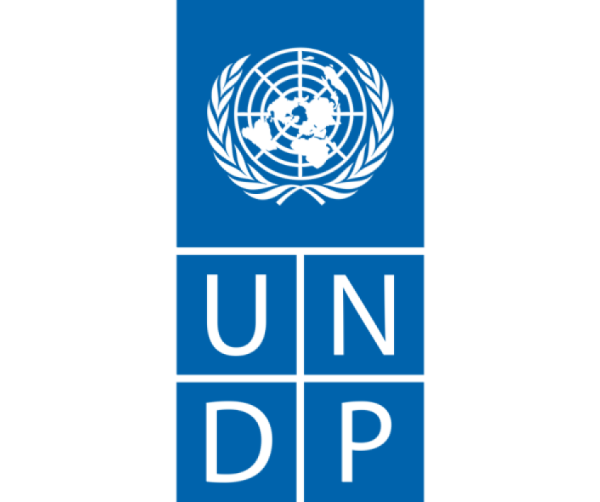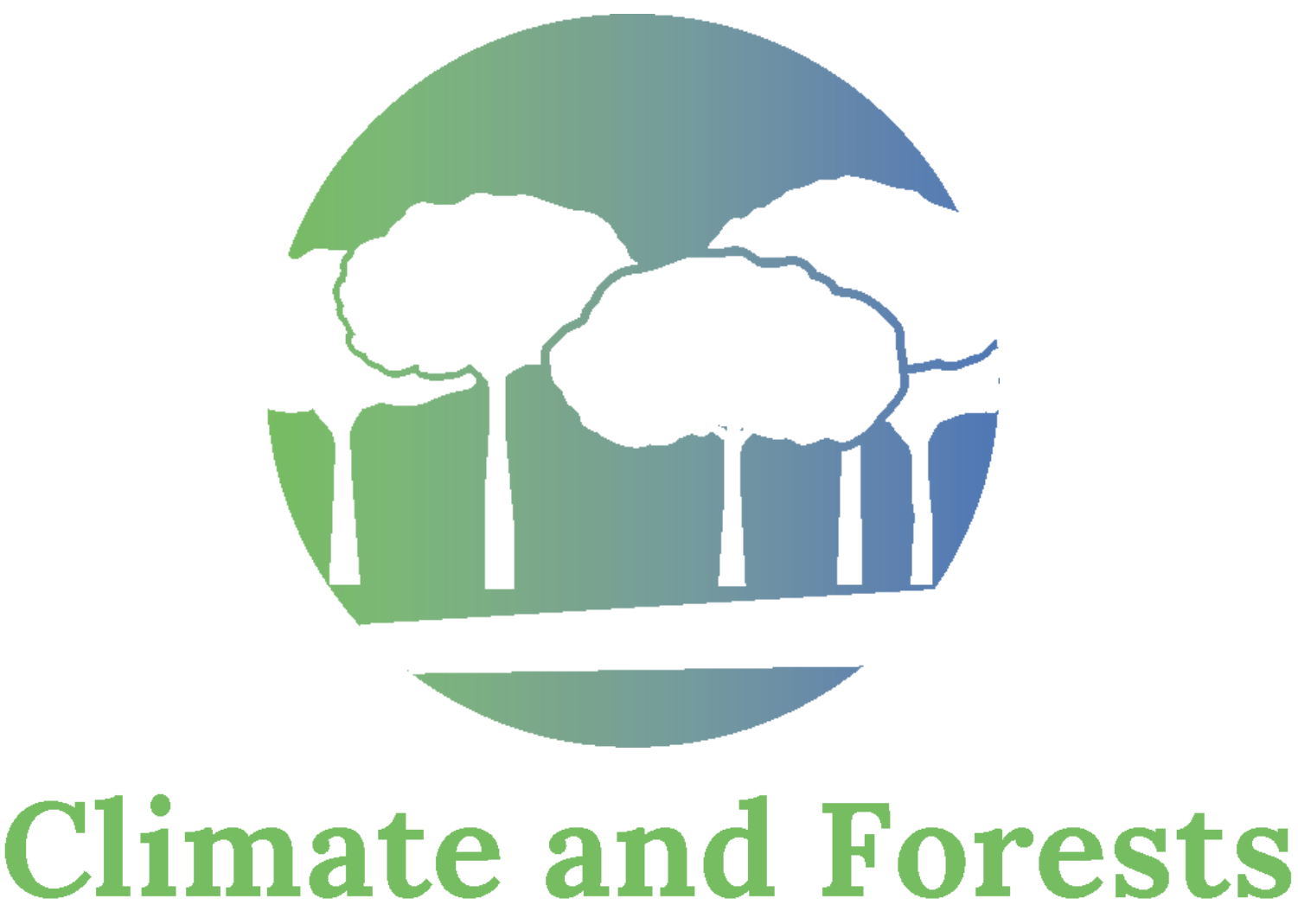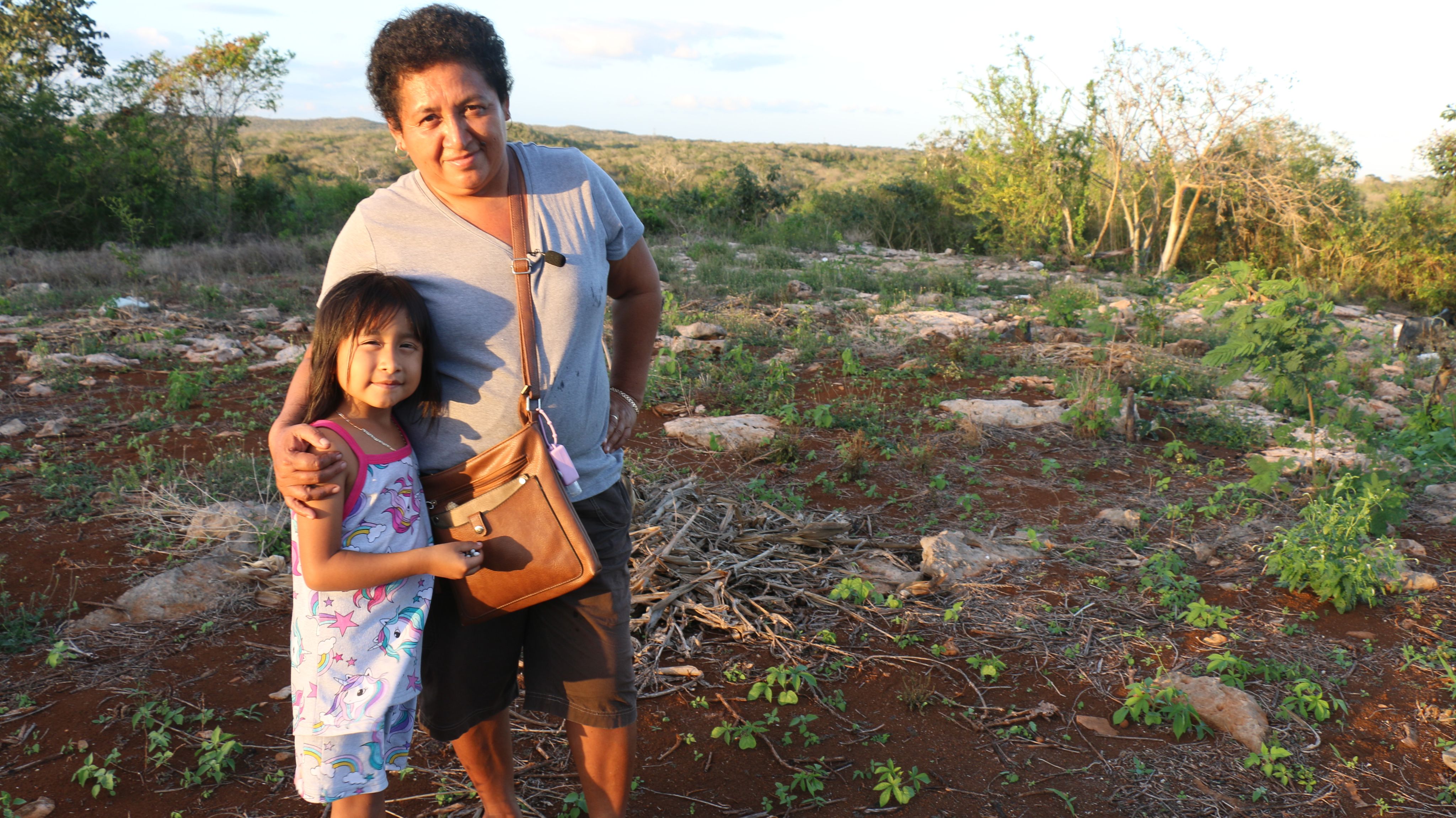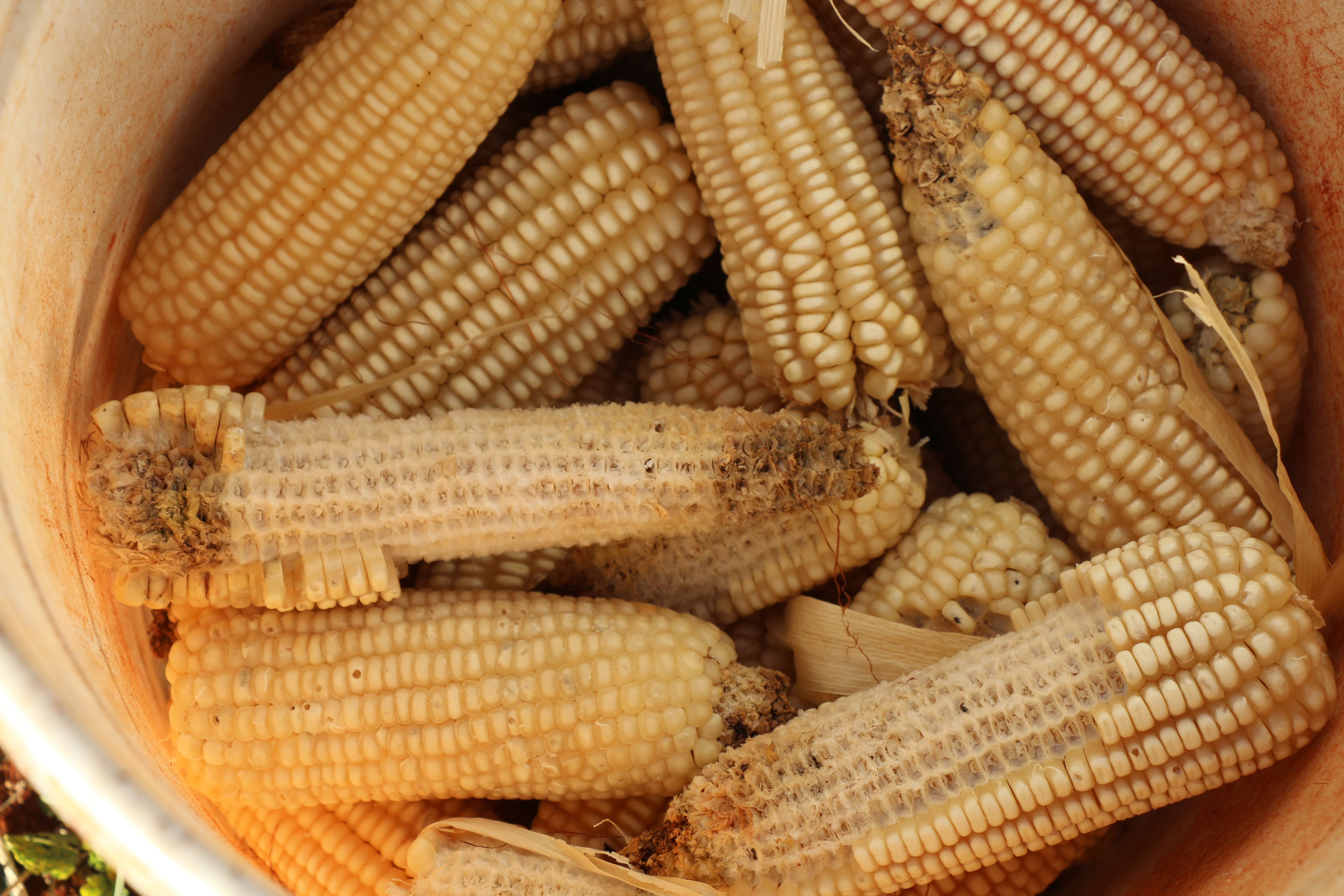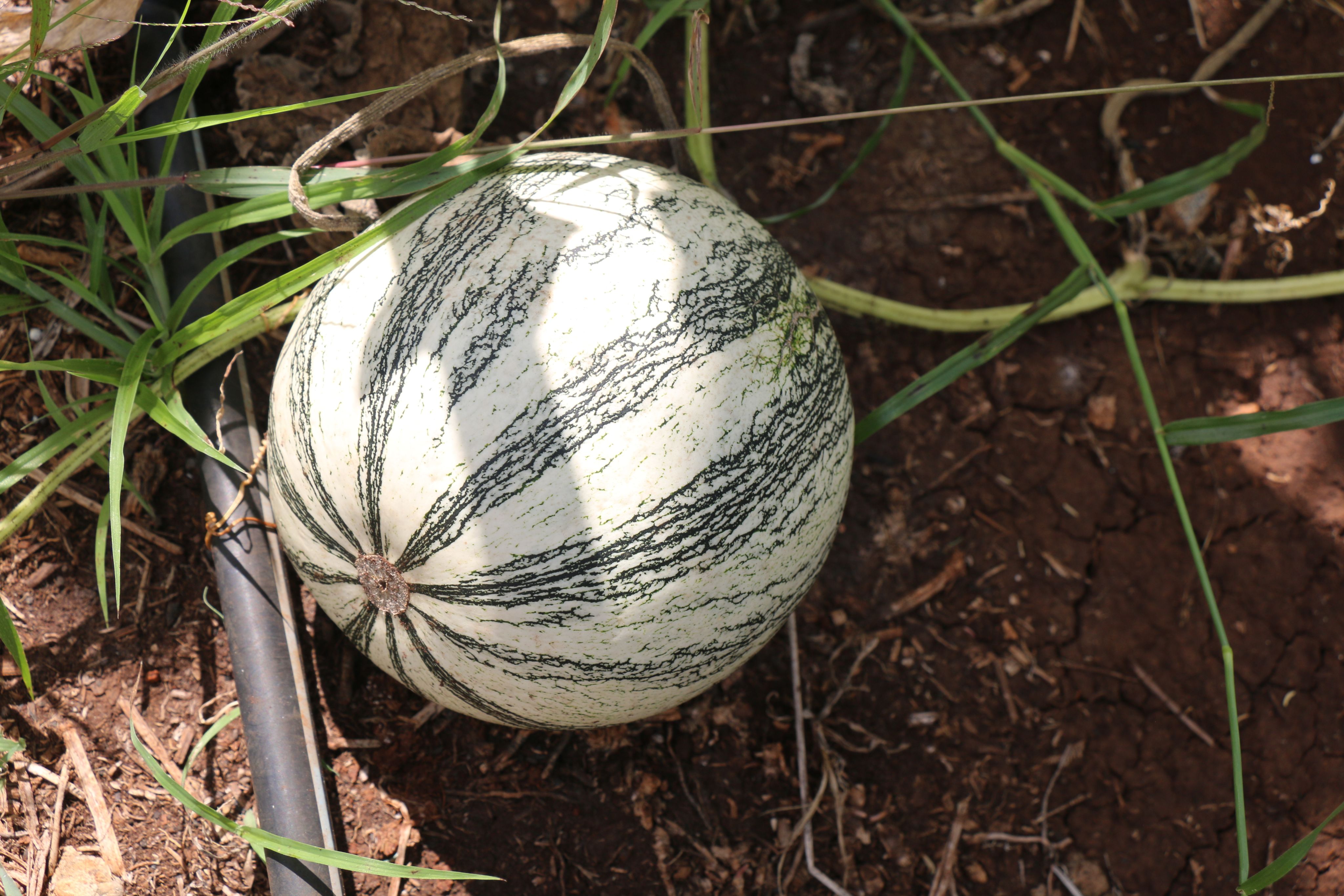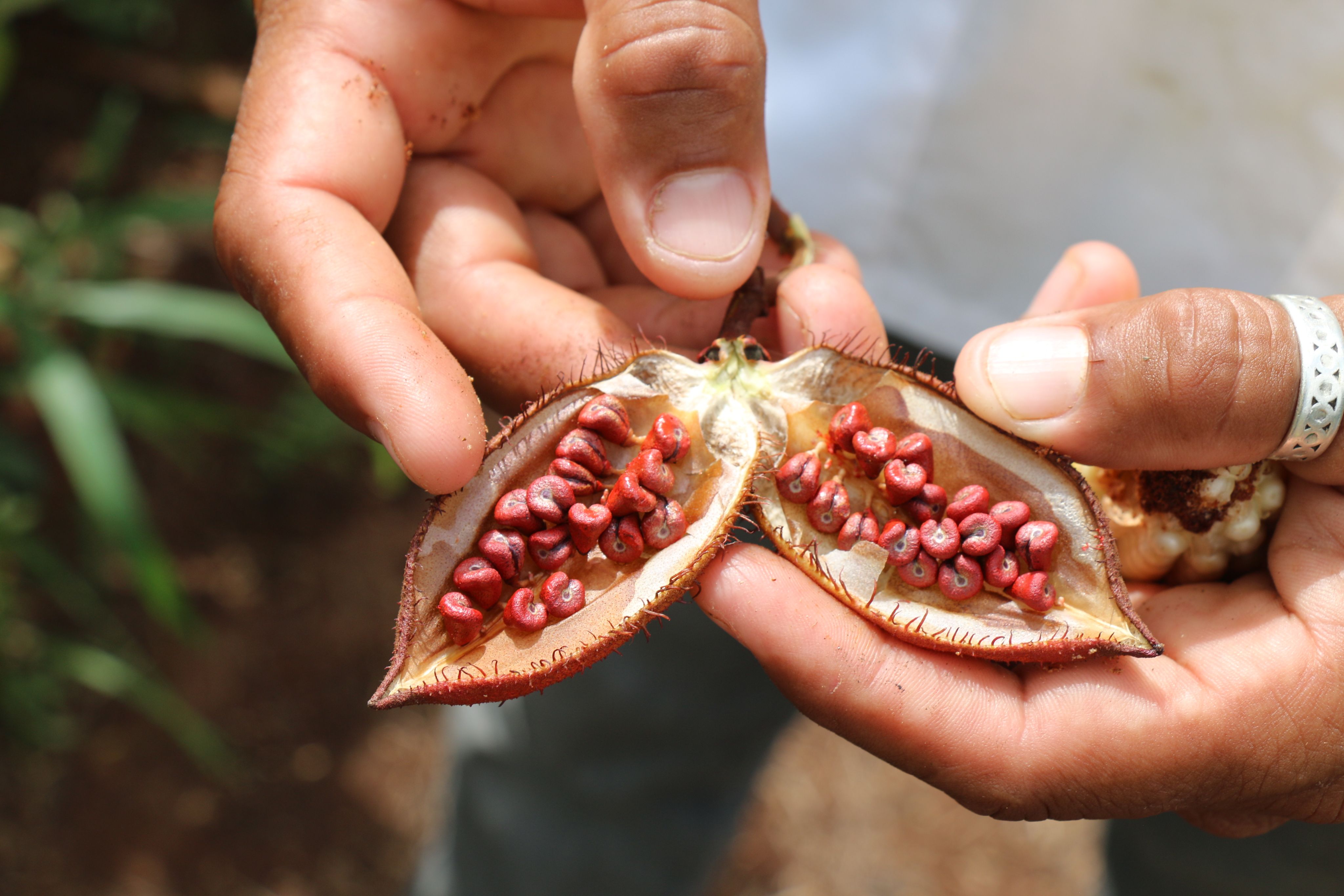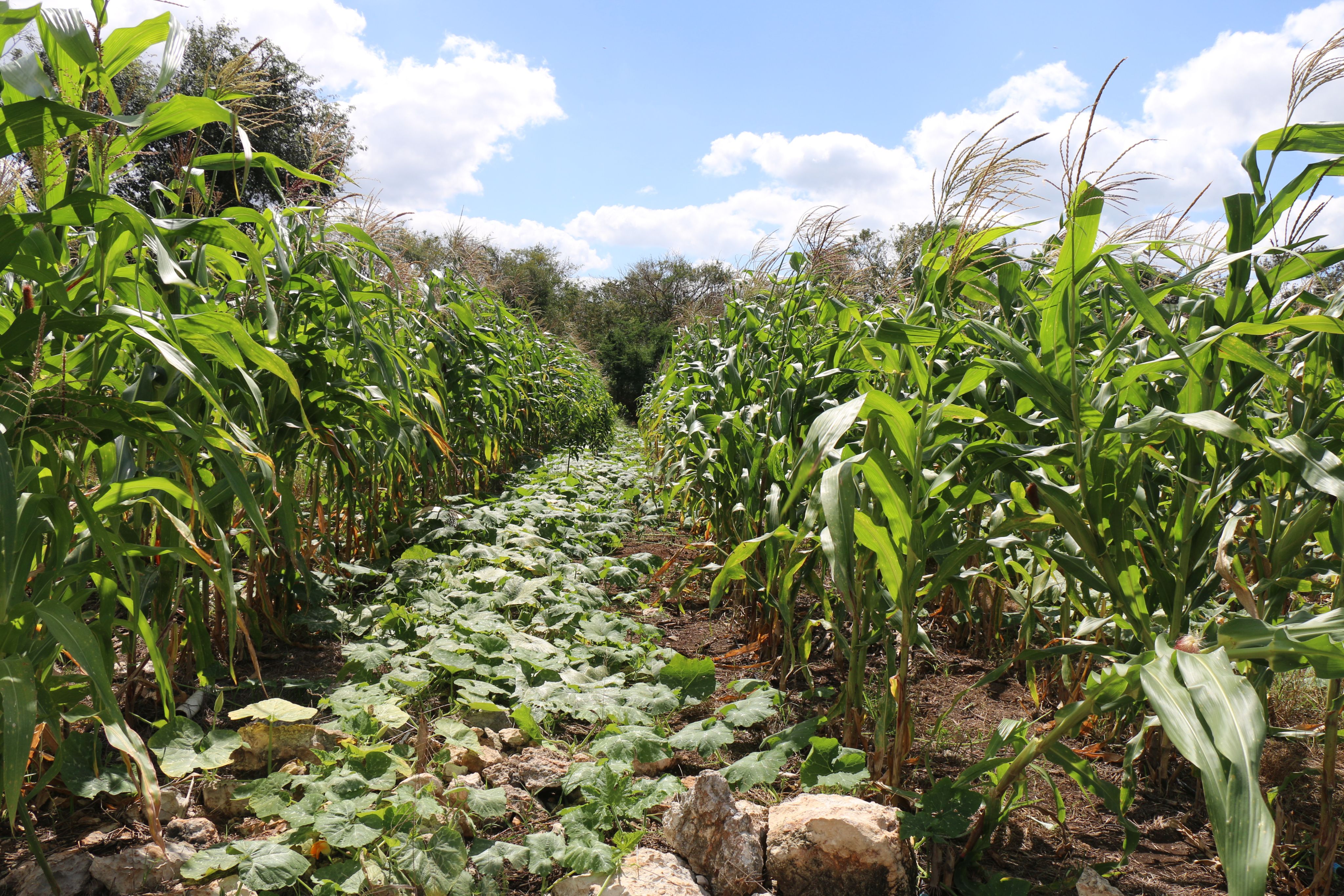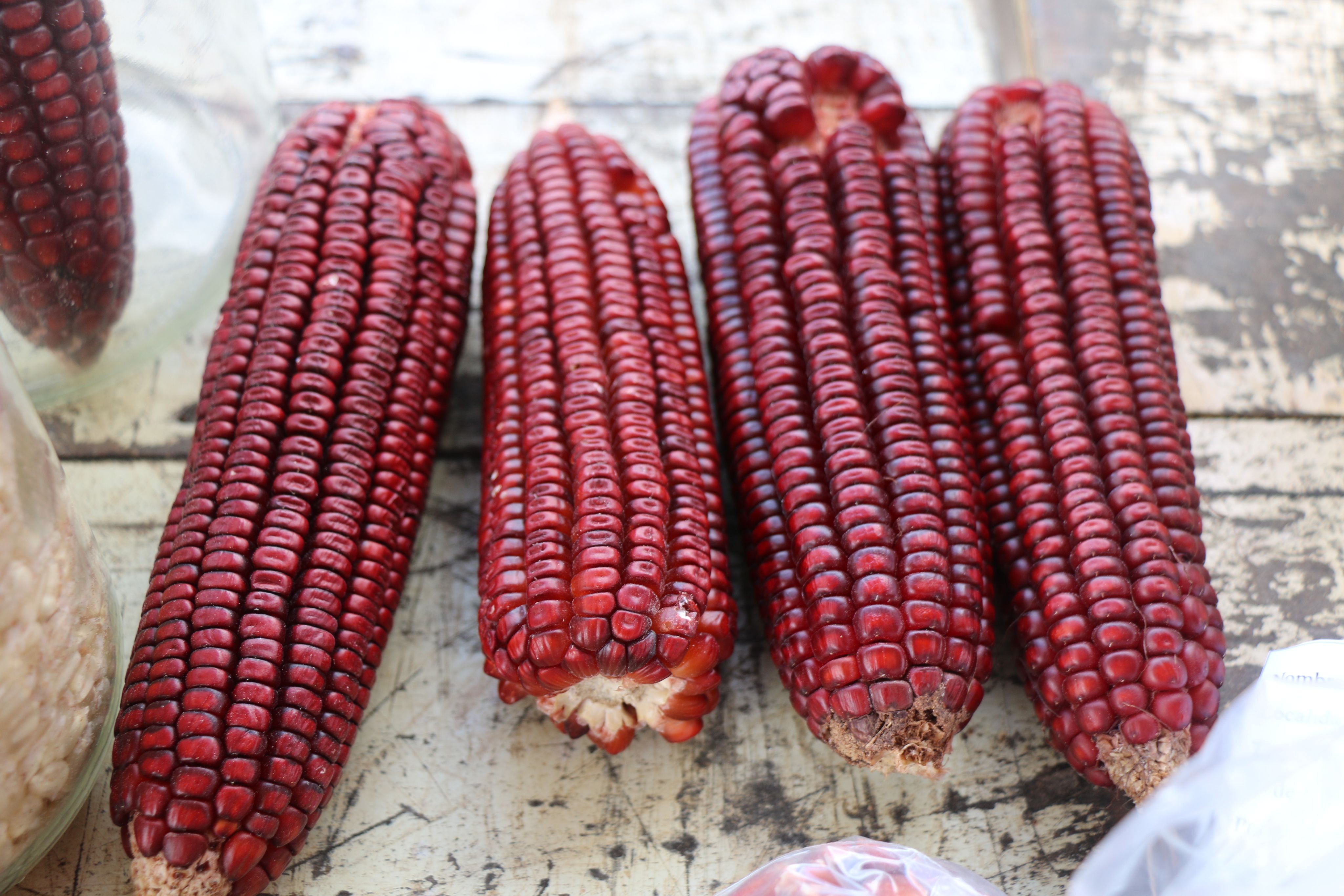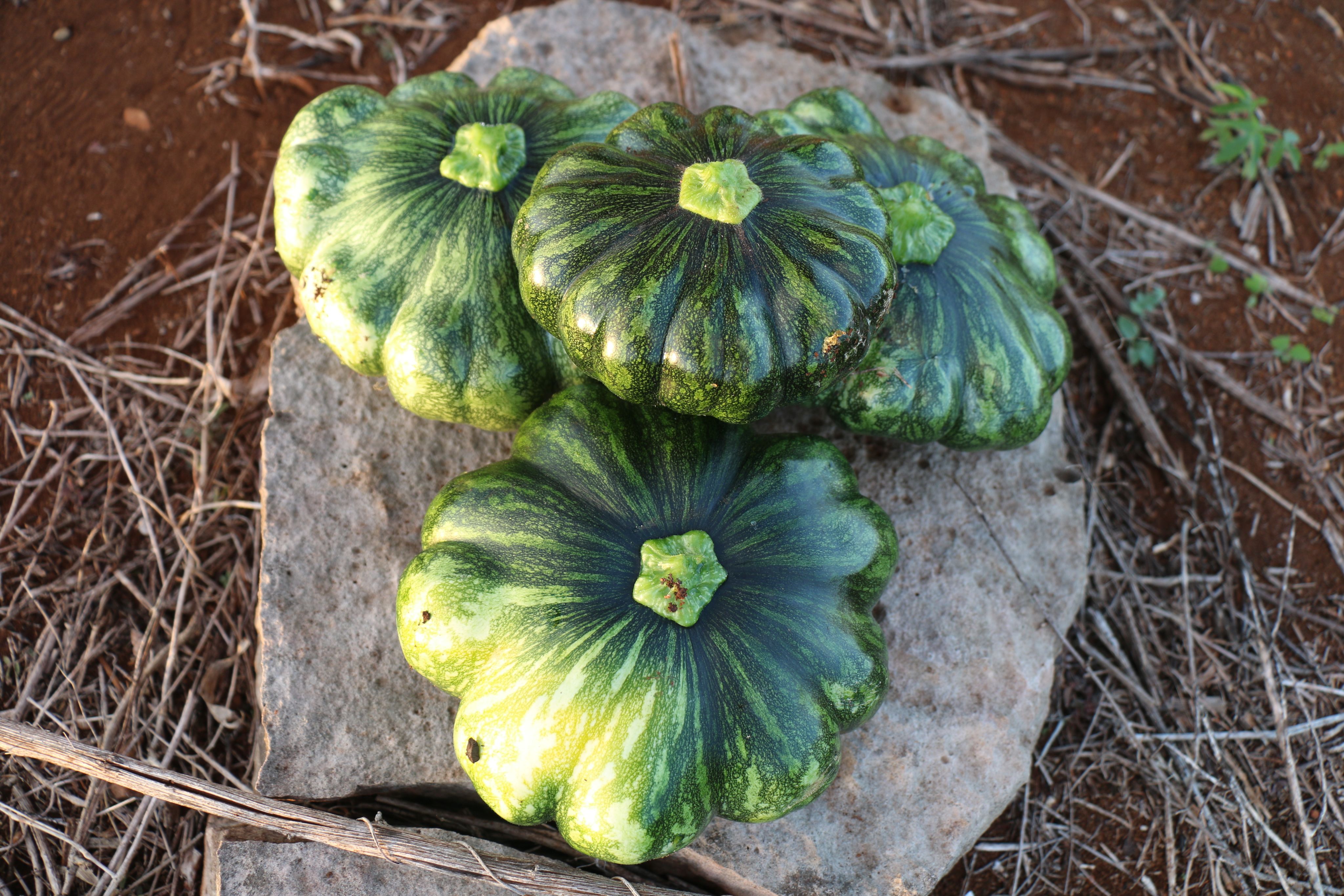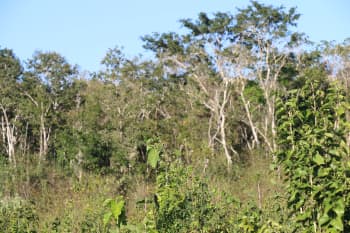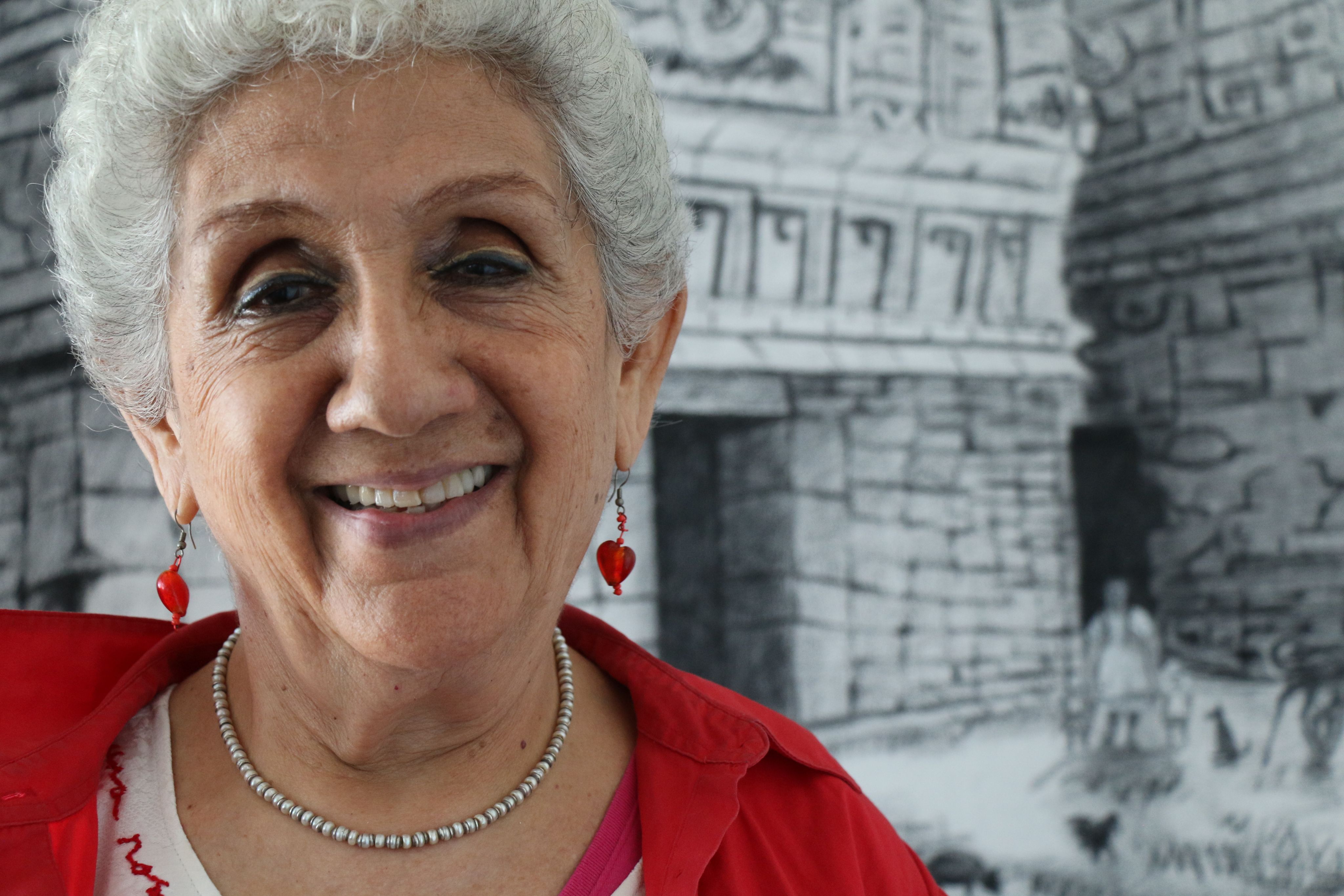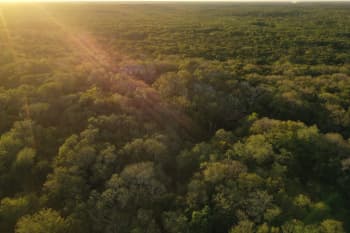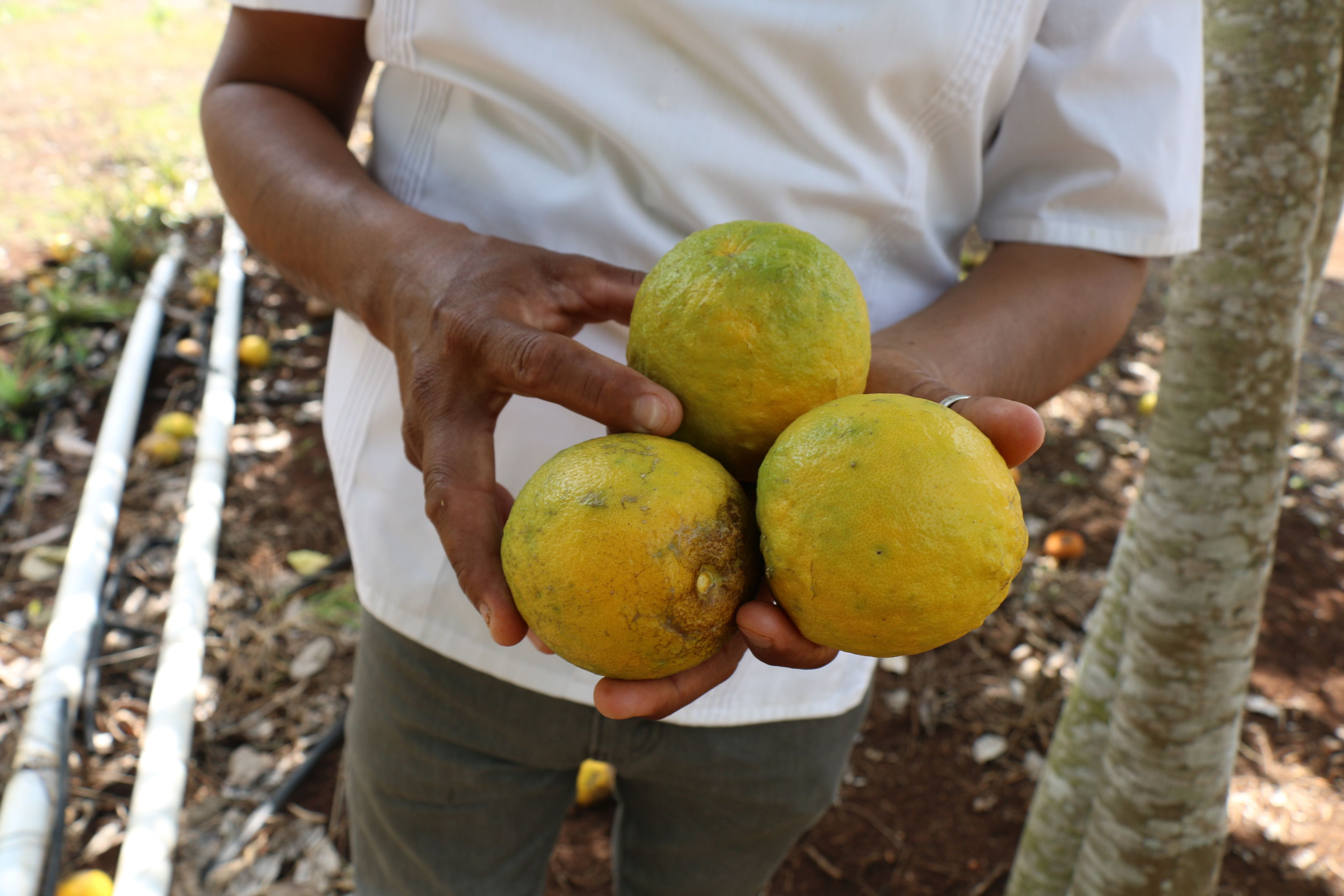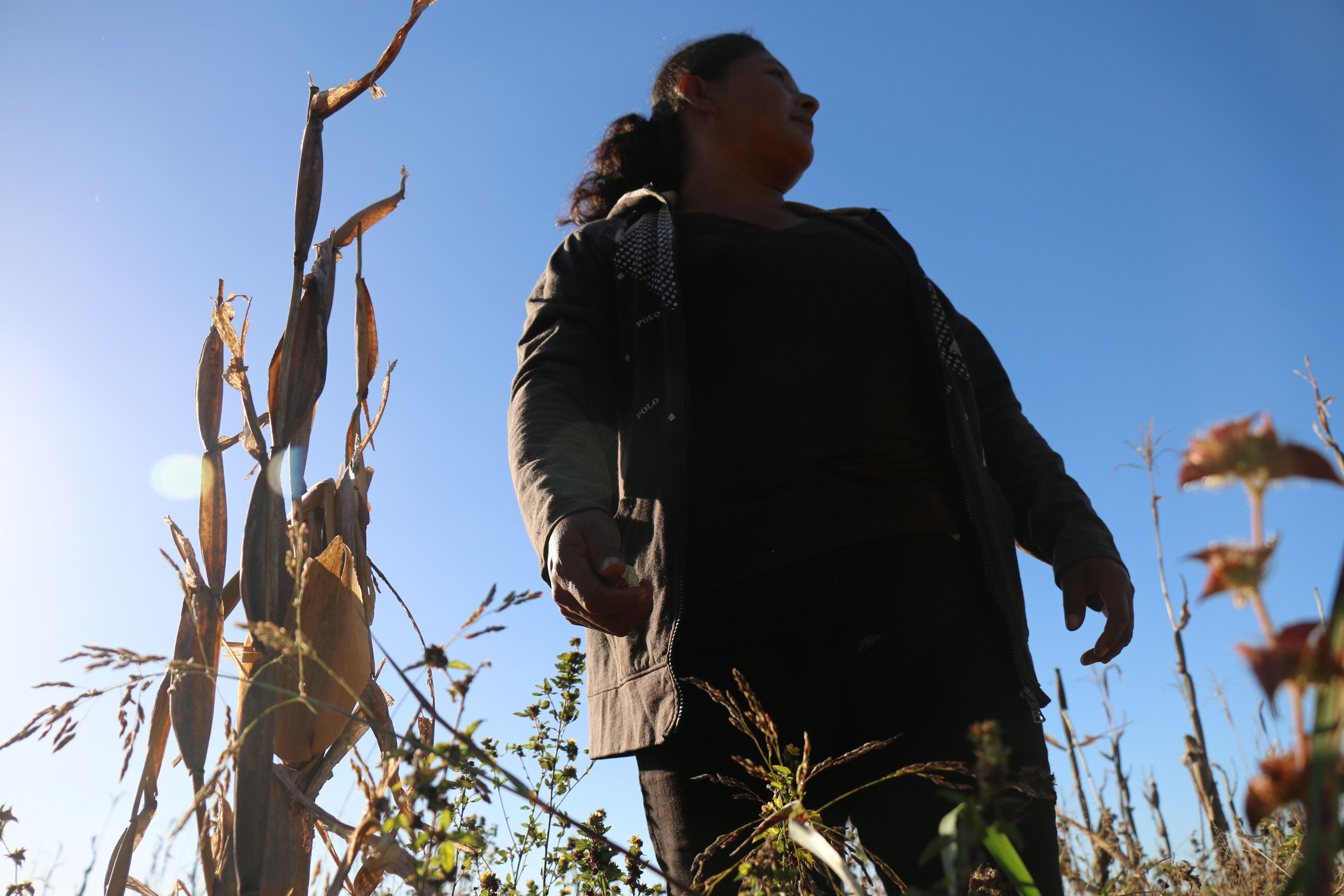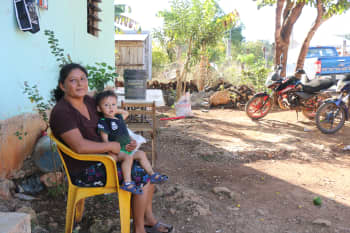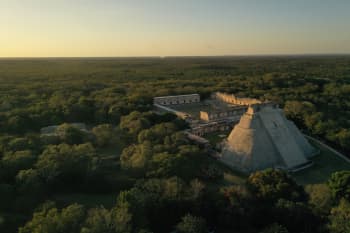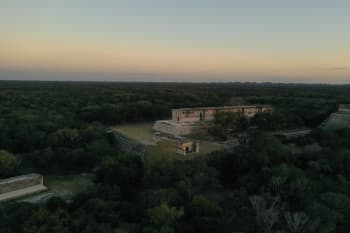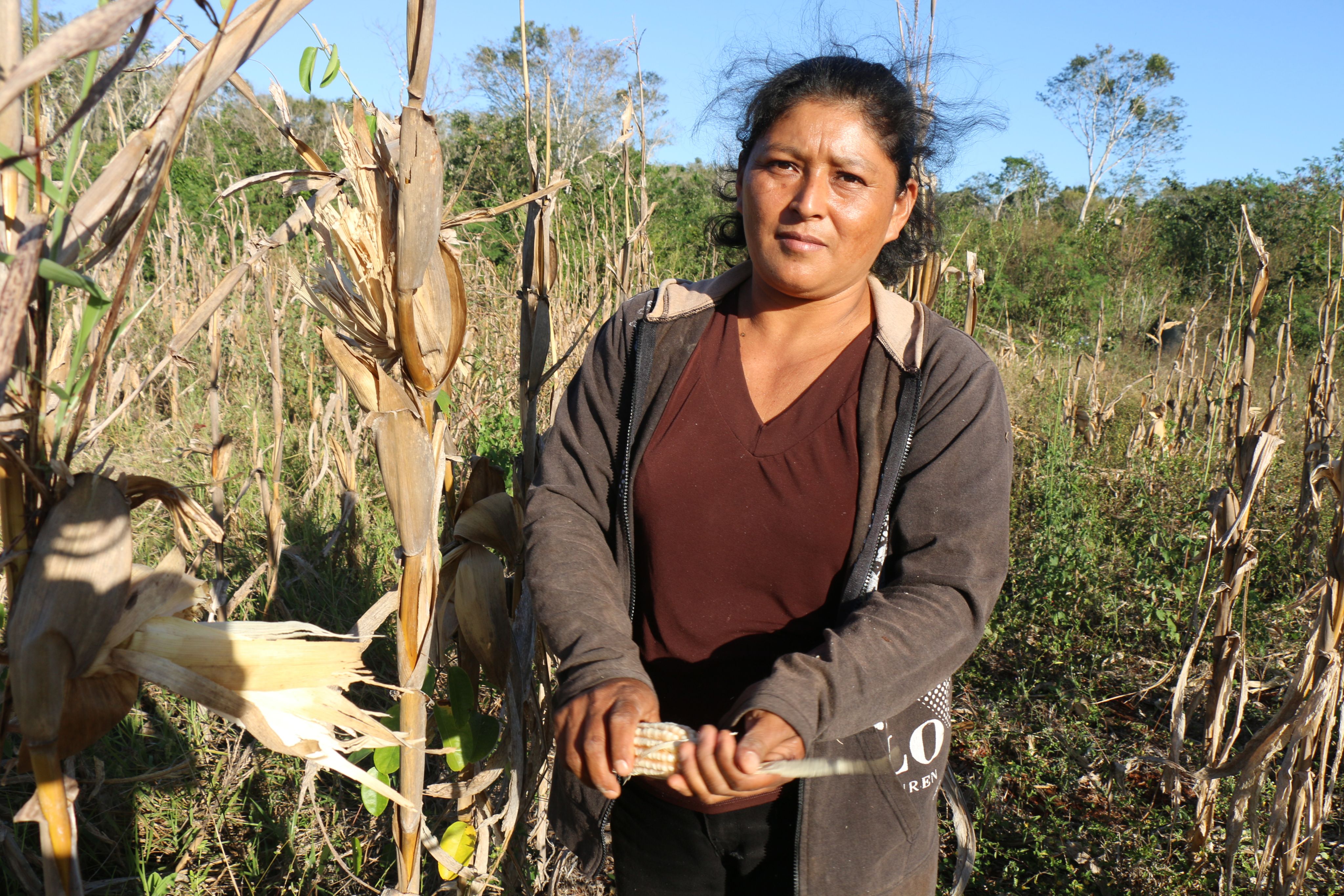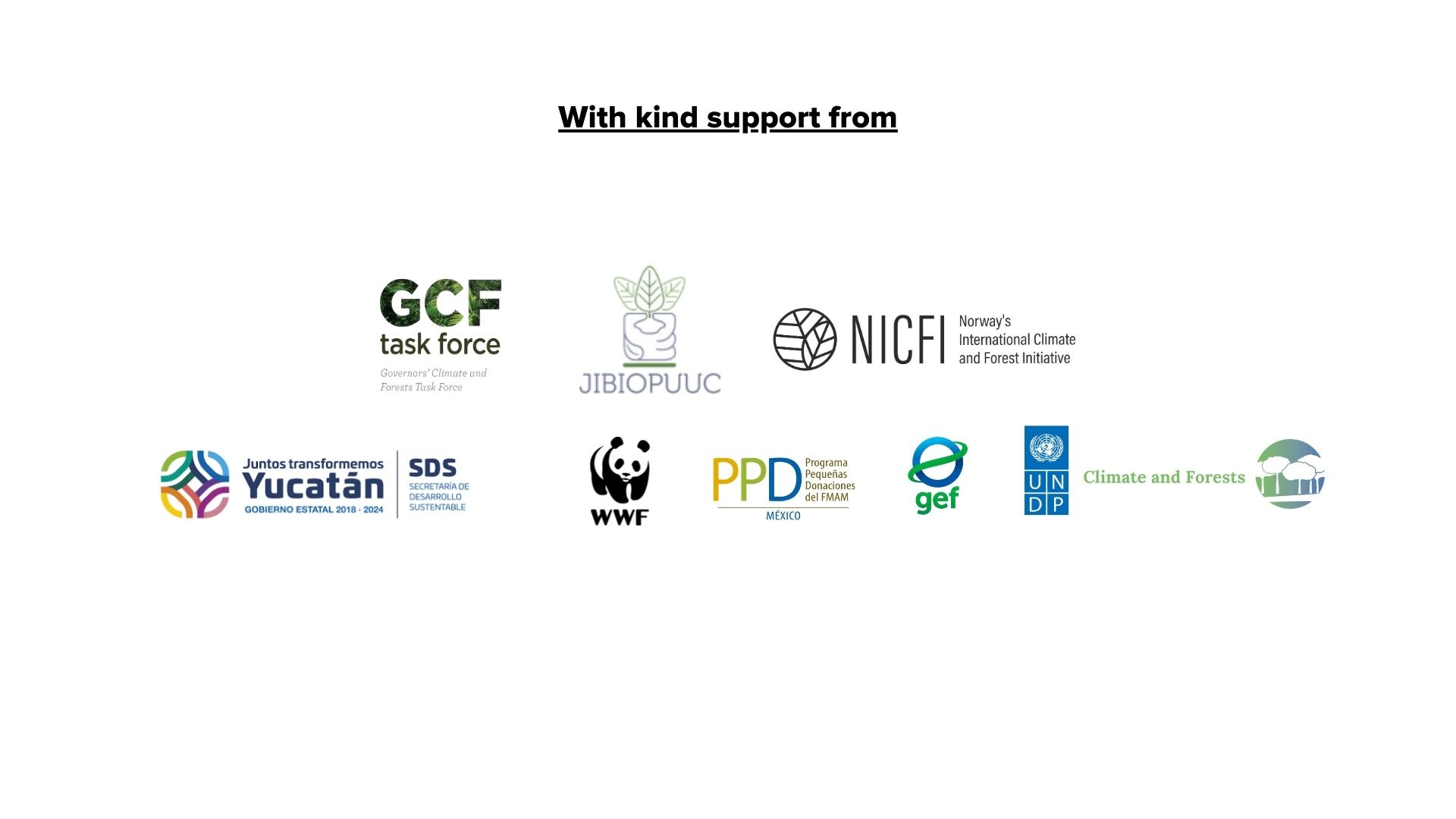Heritage of the milpa
Milpa, the Mayan millennial agriculture system is key to forest conservation in Yucatán – and needs women and young people to survive.
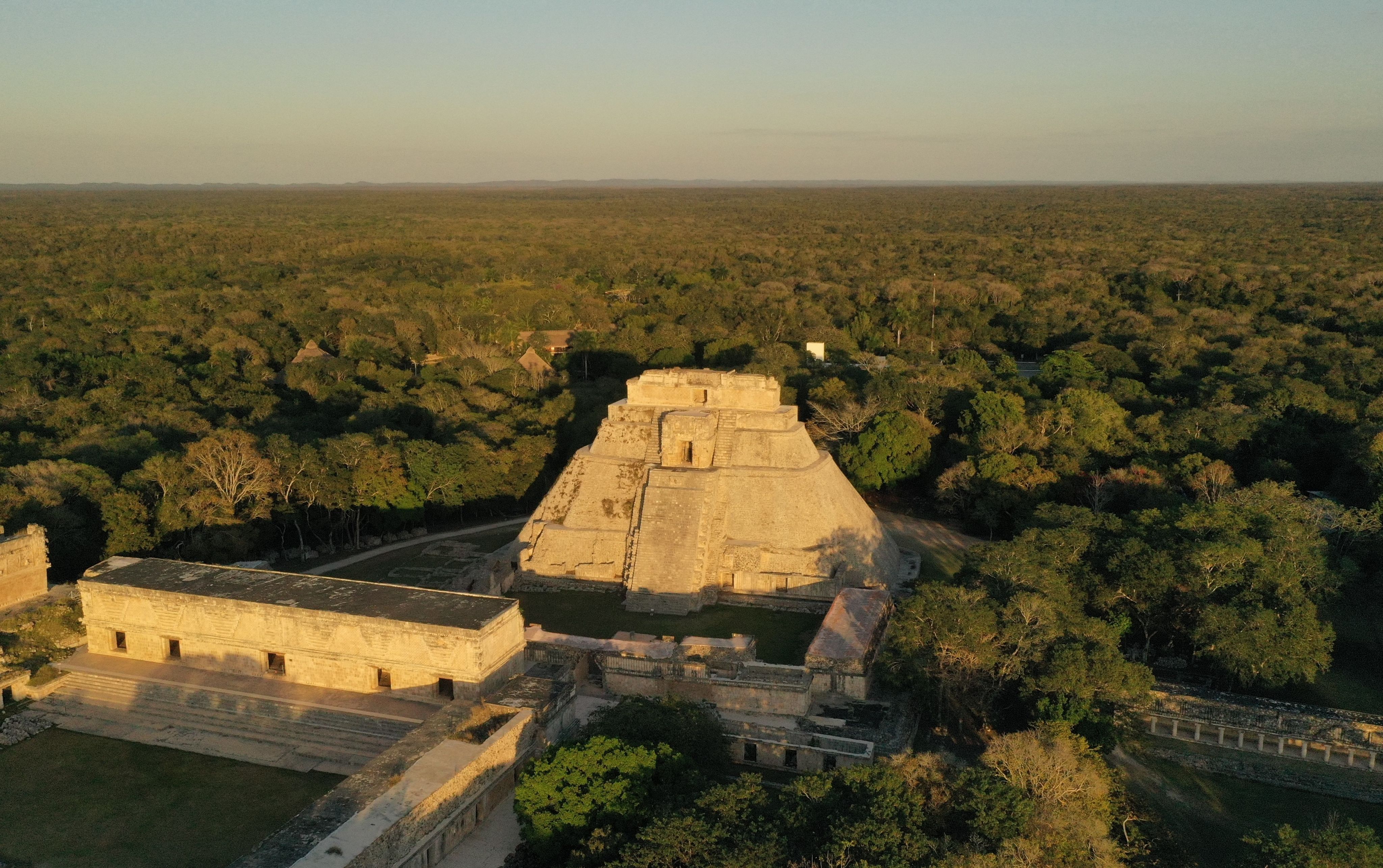
A flat karst topography dominated by limestone bedrock with a few scattered jabín trees and dry bushes: In this seemingly barren landscape, it’s a surprise to discover all sorts of green, yellow, orange pumpkins and zucchini growing among the rocks. Farmer Ofelia Quijada is proud of her yield: “We’ve seen a big test for society during the pandemic. Restaurants, hotels, all of them closed, most of them went down. What kept shining and thriving was our field work, that’s what people were able to rely on. It gave people hope that they can help themselves and others in this difficult period.”
Milpa farmer Ofelia Quijada with her granddaughter. © Photo by Roxana Auhagen
Milpa farmer Ofelia Quijada with her granddaughter. © Photo by Roxana Auhagen
© Photo by Roxana Auhagen
© Photo by Roxana Auhagen
© Photo by Roxana Auhagen
© Photo by Roxana Auhagen
© Photo by Roxana Auhagen
© Photo by Roxana Auhagen
© Photo by Roxana Auhagen
© Photo by Roxana Auhagen
© Photo by Roxana Auhagen
© Photo by Roxana Auhagen
© Photo by Roxana Auhagen
© Photo by Roxana Auhagen
An ancient farming practice is key to forest conservation in Yucatán
53-year-old Ofelia lives in the village of Oxkutzcab on the Yucatán peninsula and has always been practicing milpa farming. The milpa, a traditional farming system practiced by the indigenous Maya people of Central America and southern Mexico, involves rotating agricultural plots – usually with corn, beans, squash, and other vegetables – within a forested area. This rotation involves the planting of multiple crops and allows for natural forest regeneration in previously cultivated plots. As a result, these “forest gardens” maintain high levels of biodiversity and soil fertility by preserving a mosaic of forest and agricultural habitats. A variety of plant and animal species in Yucatán depend on the diverse environments created by this ancient agricultural practice.
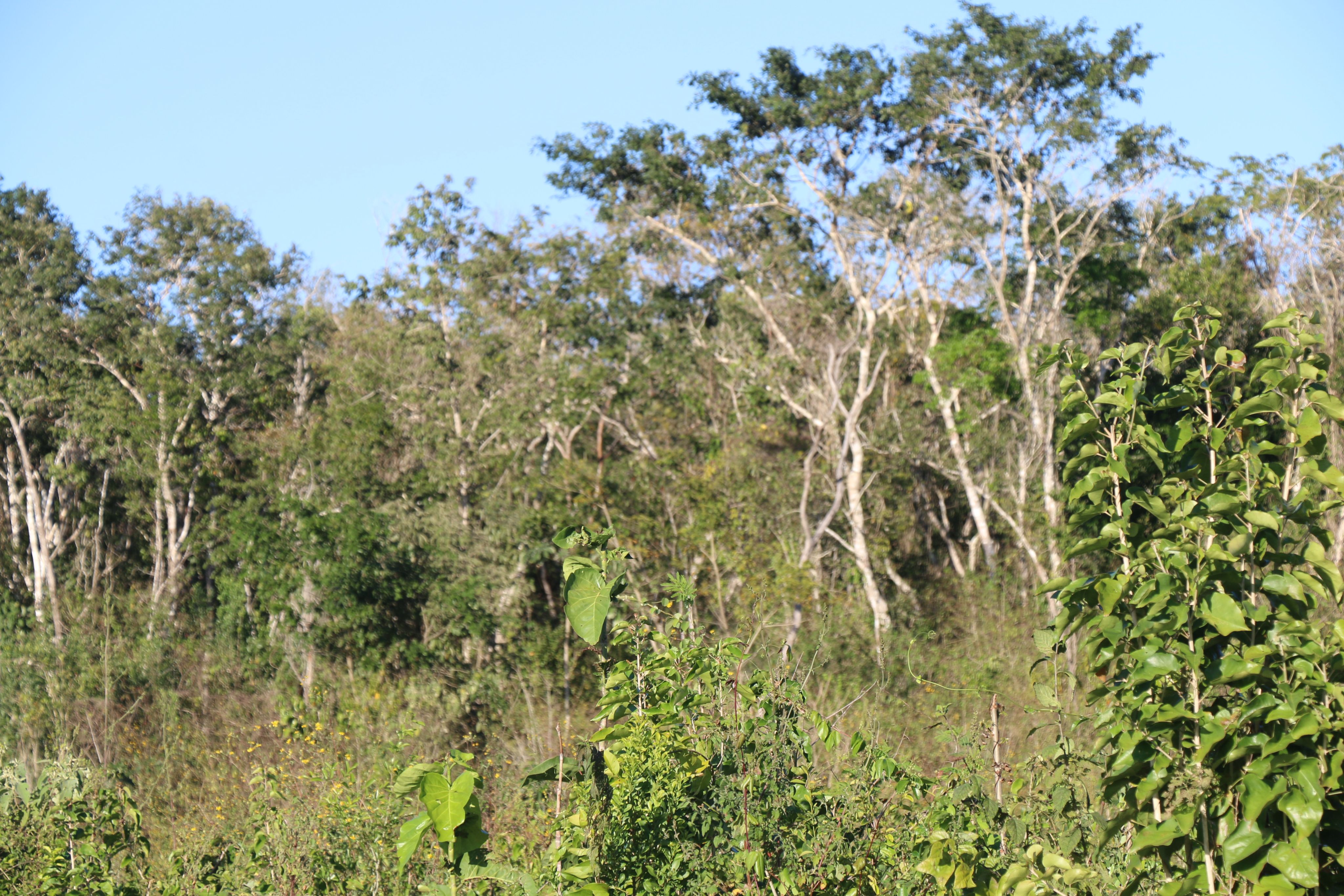
The heart of the Mayan culture: a globally important agricultural system
“The milpa is the heart of the Mayan culture. It’s a link between nature, agricultural system, and culture – within the milpa, the three elements are in harmony”, says social anthropologist Silvia Terán. Thanks to her work and the collective effort by academic institutions, NGOs, milperas and milperos, as well as the support of the governments of the three states of the Yucatán Peninsula (Campeche, Quintana Roo and Yucatán), the Mayan milpa of the Yucatán Peninsula received worldwide recognition as globally important agricultural heritage system (GIAHS) by the FAO this year (2023).
Social anthropologist Silvia Terán © Photo by Roxana Auhagen
Social anthropologist Silvia Terán © Photo by Roxana Auhagen
“The recovery of knowledge present in the milpa system, both agricultural and cultural, as well as an international recognition, plays a very important main role because it is to dignify the activity – it's an important message, especially for women and for the young people – because if anyone can do something to preserve the legacy of the milpa agricultural system, it's the young people and the women who have been incorporating themselves into the milpa work,” says Terán.
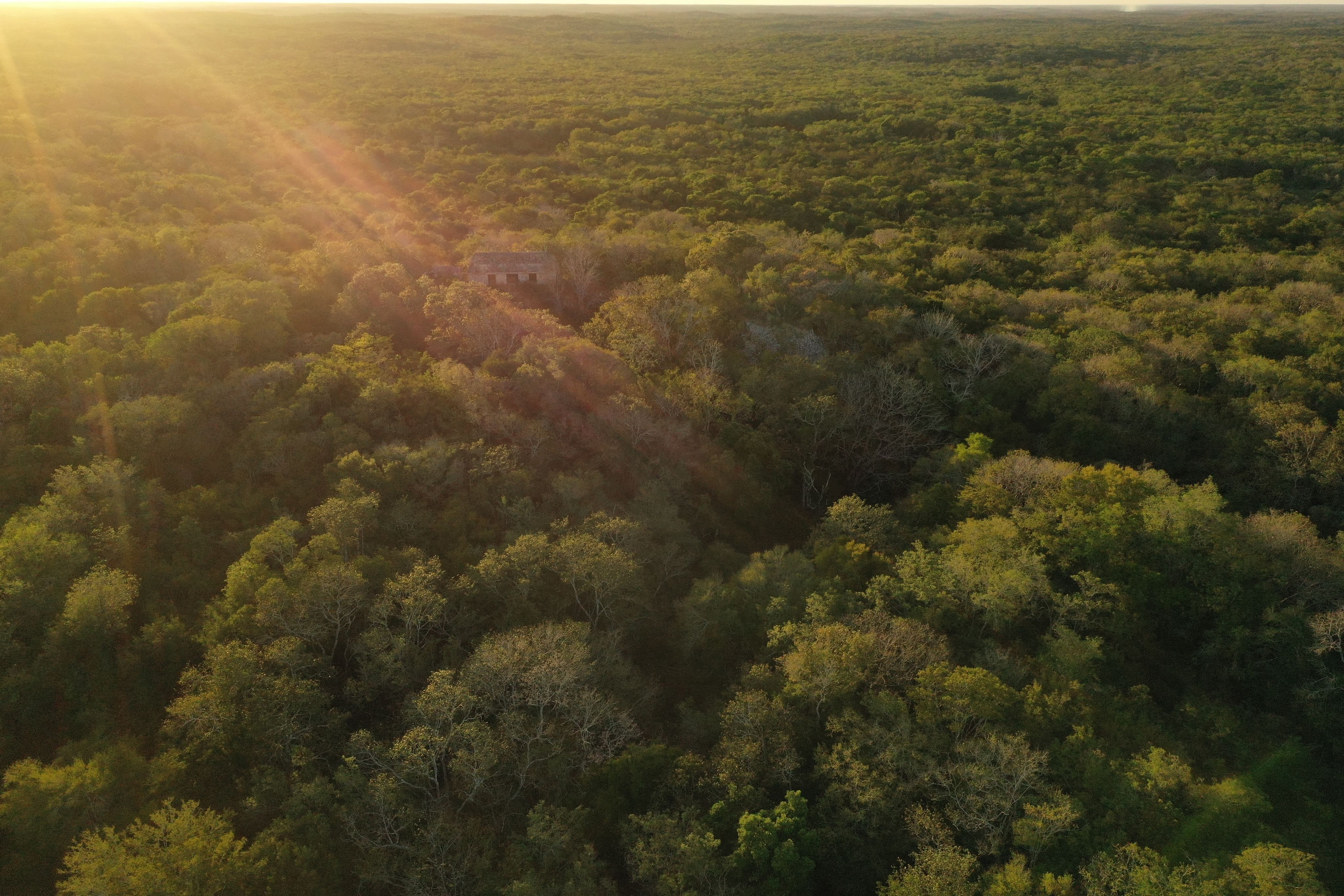
“If anyone can do something to preserve the legacy of the milpa agricultural system today, it’s women and young people.”
Silvia Terán, social anthropologist

The Secretary of Sustainable Development of the State of Yucatan, M.I.A. Sayda Melina Rodriguez Gomez
The Secretary of Sustainable Development of the State of Yucatan, M.I.A. Sayda Melina Rodriguez Gomez
The Secretary of Sustainable Development of the State of Yucatan, M.I.A. Sayda Melina Rodriguez Gomez emphasizes: "In Mexico, corn is a symbol of identity, an indispensable food and is part of the historical heritage, in the case of the "Ich Kool", the Peninsular Maya Milpa. Looking at it through time, we learn about our origins and witness that despite the adversities that climate change represents for all ecological and anthropic systems and in general for all forms of life, the Mayan milpa is in force and will remain, thanks to a transition of knowledge and know-how that day by day, seek to strengthen and preserve itself."
Farmer Ofelia Quijada sees that the younger generations of Mayans in her village are increasingly seeking opportunities outside their communities: “Some people feel ashamed to be called peasants, but it's our roots! We’re from the Mayan generation and until now we haven’t completely lost our traditions. We don’t entirely live up to them anymore, but we try to take care of our traditions – because many people who study and have degrees, don't work in the field, they look for work somewhere else.” Like Ofelia’s son, who is currently living and working in the United States.
The milpa, a traditional farming system practiced by the indigenous Maya people of Central America and southern Mexico, involves rotating agricultural plots – usually with corn, beans, squash, and other vegetables – within a forested area. © Photo by Roxana Auhagen
The milpa, a traditional farming system practiced by the indigenous Maya people of Central America and southern Mexico, involves rotating agricultural plots – usually with corn, beans, squash, and other vegetables – within a forested area. © Photo by Roxana Auhagen
Apart from youth migration and the subsequent loss of traditional agricultural knowledge, the Mayan milpa system faces several challenges today, primarily due to changing social, economic, and environmental conditions. © Photo by Roxana Auhagen
Apart from youth migration and the subsequent loss of traditional agricultural knowledge, the Mayan milpa system faces several challenges today, primarily due to changing social, economic, and environmental conditions. © Photo by Roxana Auhagen
Women lack access to land rights
Apart from youth migration and the subsequent loss of traditional agricultural knowledge, the Mayan milpa system faces several challenges today, primarily due to changing social, economic, and environmental conditions. These challenges include unclearly defined land tenure and property rights, which can lead to land conflicts and undermine the long-term sustainability of milpa practices.
“Women in Yucatán mostly don’t have agrarian rights, which is problematic, especially since it’s them who mostly work in the milpa and depend on it, as the men mostly leave rural areas for other jobs in the cities. Women should organize themselves to gain rights regarding the land around the milpa and to be able to transmit that land to their children as well. Only this way, the system can survive,” says Silvia Terán.
Another reason for farmers to abandon the traditional milpa practices is increasing market pressures with a rising demand for cash crops and commercial agriculture – as opposed to the milpa subsistence farming. Expanding agriculture and urbanization are leading to deforestation and land conversion, which further reduces the availability of forested areas with suitable milpa plots.
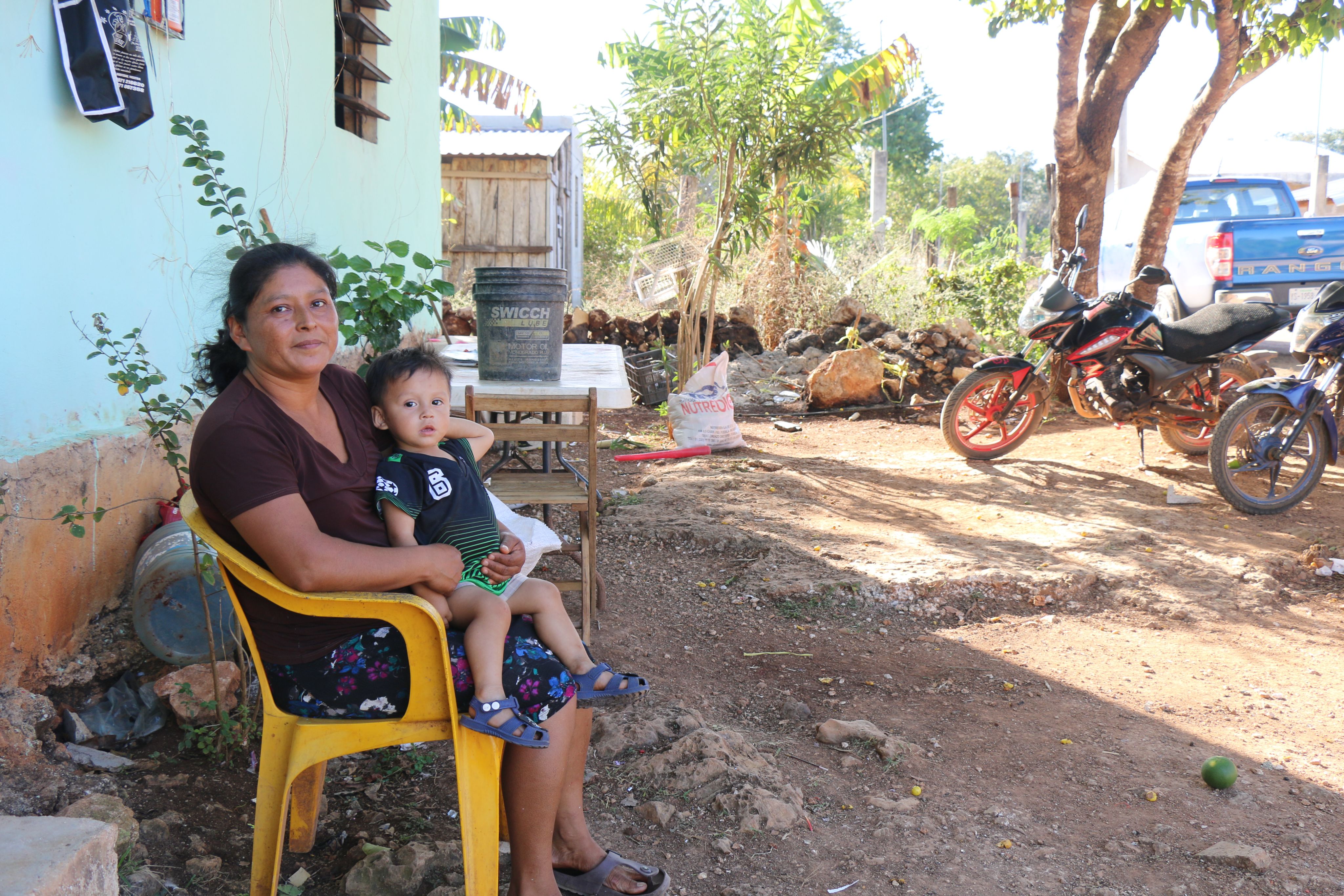
Supporting milpa farmers to prevent deforestation
By maintaining a mosaic of forest and agricultural lands, the Mayan milpa system reduces the overall pressure on primary forests, which are vital carbon sinks, and thus helps to prevent large-scale deforestation. “The Mayan Forest (Selva Maya) has mostly been managed as a landscape, being a territory where the Mayan milpa abounds – through 3500 years of rotational management in plots with an average size of two hectares, the forest has been revitalized and conservation has been promoted at the same time. In the milpa system, you let rest or what we call fallow for 20, 50 years even, and you manage it again. So that leads to a healthy recovery, to orderly management,” says Minneth Medina García, Director of the Intermunicipal Board of the Puuc region (JIBIOPUUC). Together with Yucatán’s Ministry of Sustainable Development (SDS), WWF Mexico and other partners, she leads a project in the last remaining forest reserves of the state of Yucatán, the Región Biocultural del Puuc, which forms part of a larger biocultural corridor extending into Central America. The project works on the reserve’s forest management program and is strengthening sustainable production alternatives through beekeeping, payments for environmental services and the support of milpa farmers: “We need to strengthen the milpa producers, so that they can have greater profitability and are not rotating or logging the forest,” says Minneth Medina.
"We are convinced that the Mayan milpa is a system that has adapted and adapts to the challenges presented at the humanitarian level, as a result of a conventional development model, and thanks to the hard work done by the milperas and milperos on a daily basis, this system remains and it is up to all of us to make it continue," underlines the Secretary of Sustainable Development of the State of Yucatan, M.I.A. Sayda Melina Rodriguez Gomez.
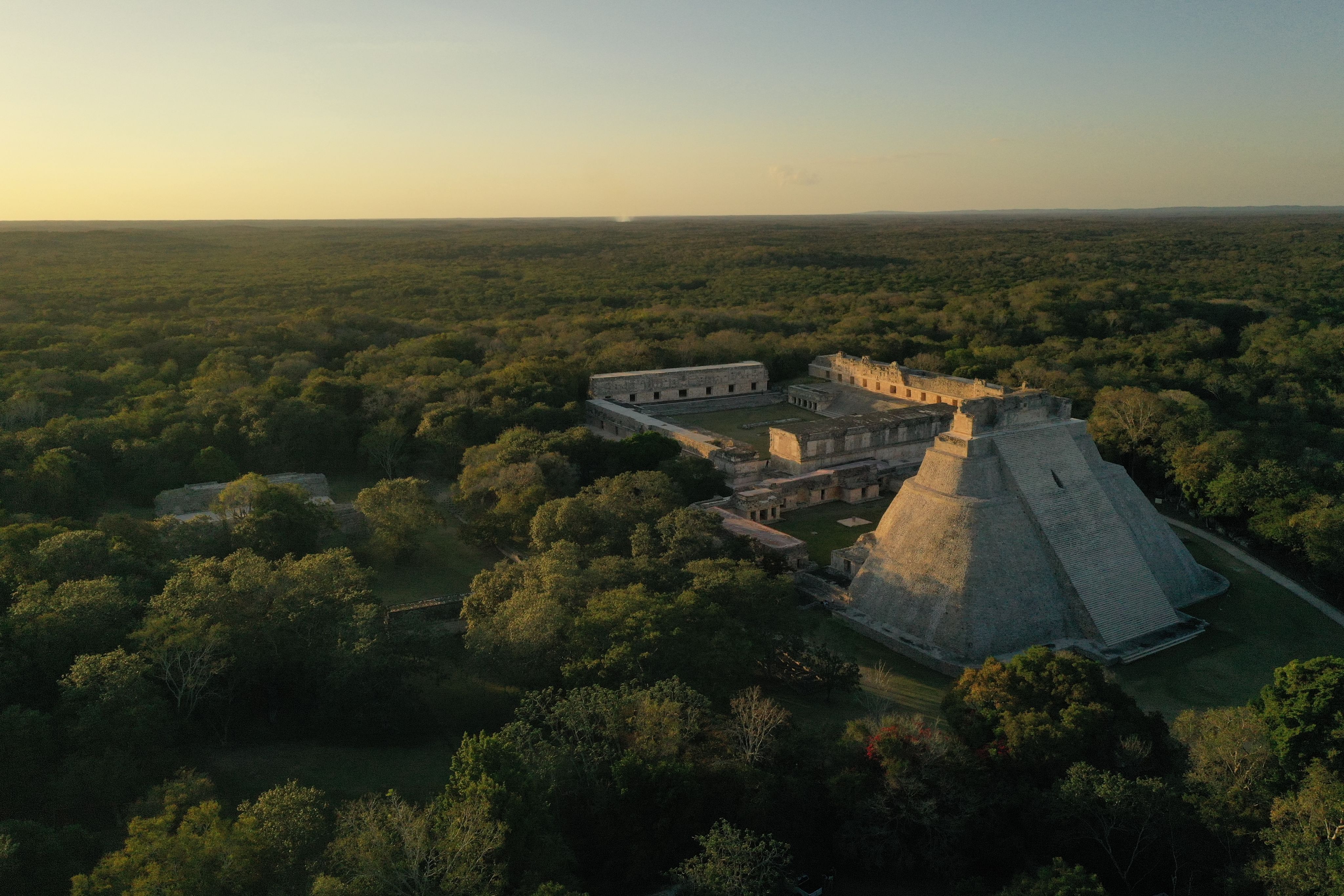
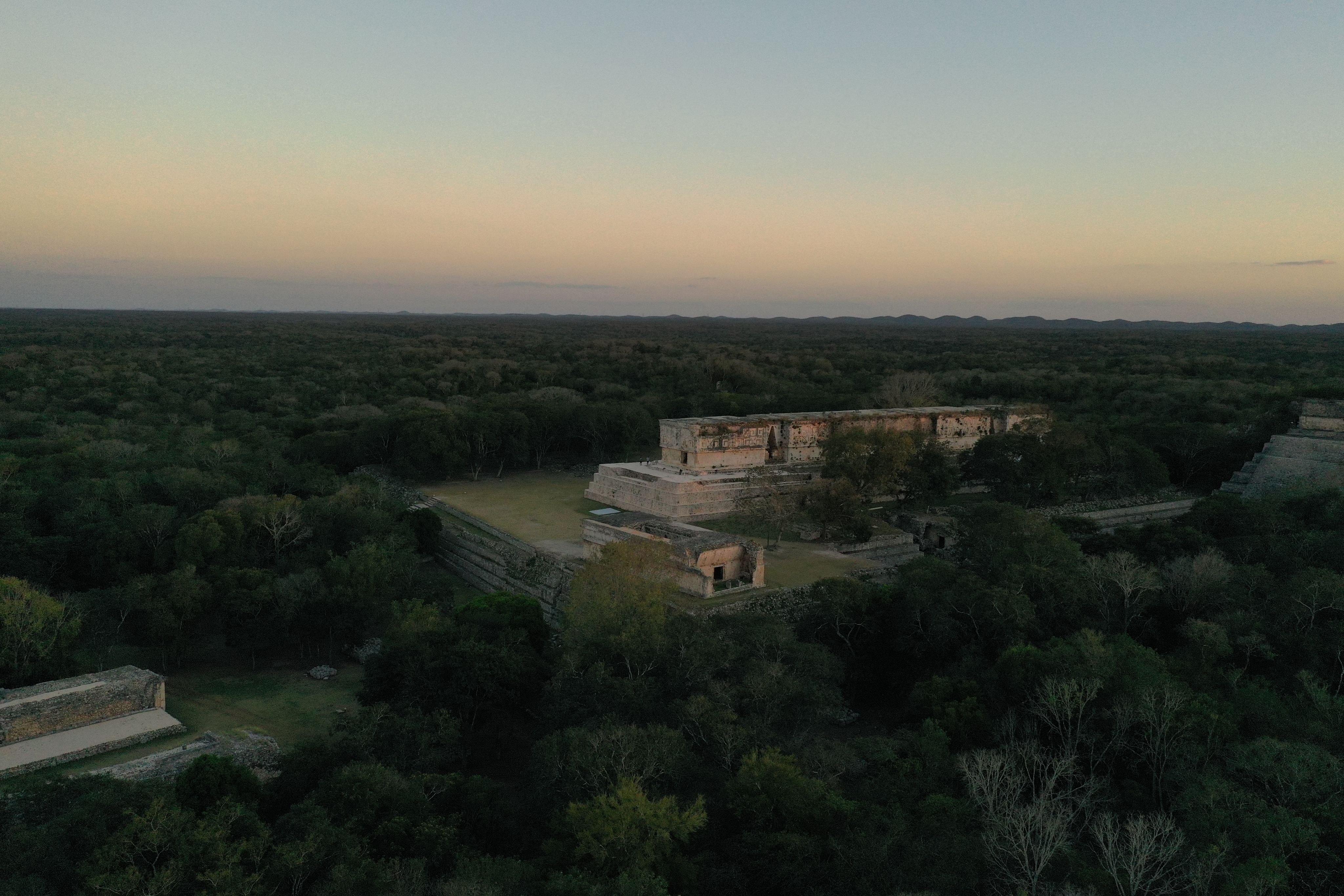
Elisabeth Perez Martinez considers herself lucky to be one of the farmers supported by the project – together with her husband she works in their milpa plot, surrounded by the typical Yucatán dry forest “I have an affection, a love for my work”, she says and adds: “It's a wonder to be out here among the trees. It's a jungle that we should take care of, that we should love, that we should protect – as if it were a person.”
Milpa farmer Elisabeth Perez Martinez harvesting corn. © Photo by Roxana Auhagen
Milpa farmer Elisabeth Perez Martinez harvesting corn. © Photo by Roxana Auhagen
Special thanks to Minneth Medina Garcia and her team at JIBIOPUUC, the communities of the Biocultural Reserve of Puuc, Edgar Gonzalez and the UNDP Country Office in Mexico, M.I.A. Sayda Melina Rodriguez Gomez, Sergio Ricardo Aguilar Escalante, Gilberto M. González Kuk and the team at Yucatán’s State Secretary of Sustainable Development (SDS), Eduardo Rendón and WWF Mexico, Sébastien Proust and the UNDP Small Grants Program as well as to the GCFTF and NICFI for their support and partnership.
Story, Video & Photography: Roxana Auhagen, UNDP C&F | Drone Photography: Sébastien Proust, UNDP SGP | Social Media: Sila Alici Kavuk, UNDP C&F
Footnotes:
· The Governors' Climate and Forests Task Force (GCFTF) is a broad network of 43 jurisdictions that cover over 1/3 of the world’s tropical forest areas. UNDP Climate & Forests serves as GCFTF's implementing partner to deliver a competitive funding window to encourage innovative approaches to achieve transformation in forested landscape. The state of Yucatán is one of five single GCFTF jurisdictions that received funding through this mechanism..
· The Mexican state of Yucatán's “Implementing the State-level REDD+ Strategy for sustainable rural development” is being implemented between Yucatán’s Ministry of Sustainable Development (SDS), Intermunicipal Environmental Council of the Puuc area (JIBIOPUUC) and WWF Mexico. The project focuses on one of the most important forest reserves, the Región Biocultural del Puuc, which forms part of a larger biocultural corridor extending into Central America, strengthening capacity of the governing body (JIBIOPUUC) and sustainable production alternatives through traditional agroforestry practices (milpa maya), beekeeping, small food production, and payment for environmental services.
· UNDP Climate & Forests assists different countries and stakeholders in the implementation of the Paris Agreement by reducing deforestation, forest degradation and promoting sustainable development pathways.
